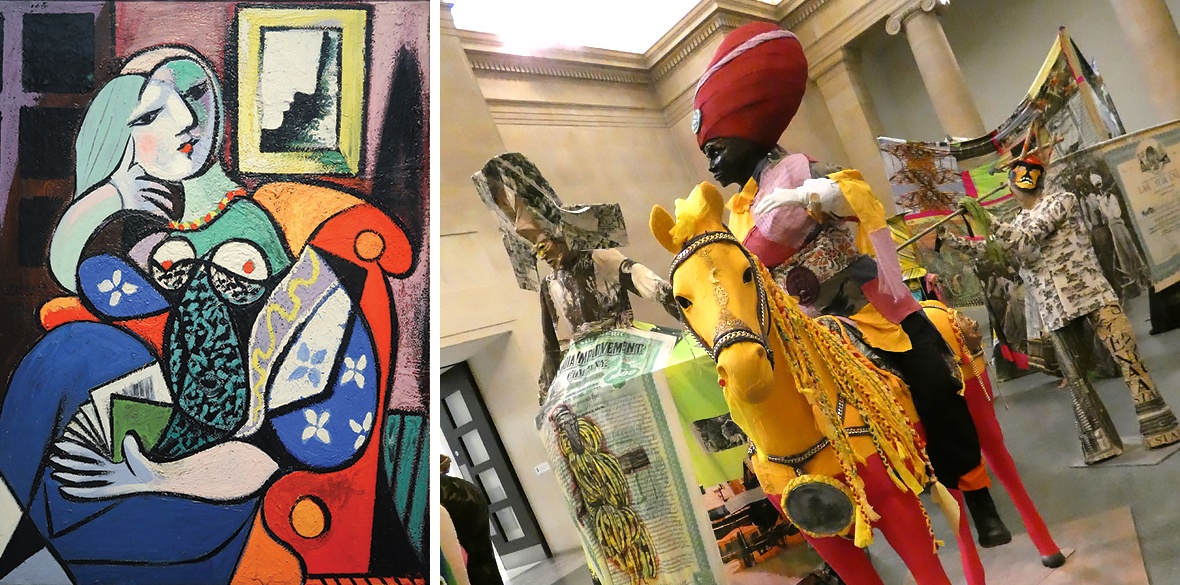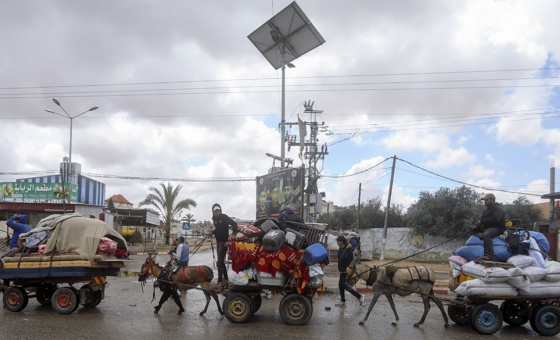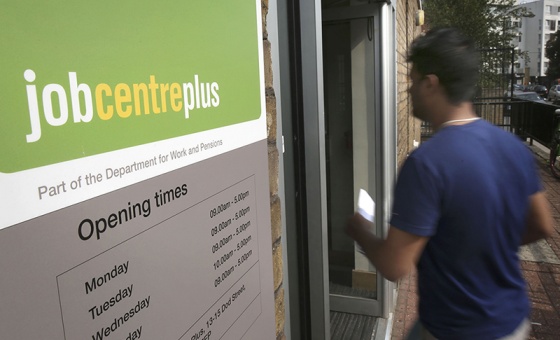This is the last article you can read this month
You can read more article this month
You can read more articles this month
Sorry your limit is up for this month
Reset on:
Please help support the Morning Star by subscribing here
INSPIRED curating at the National Gallery managed to provoke a multitude of ideas by juxtaposing just two life-size portraits — Jean Auguste-Dominique Ingres’s Madame Moitessier of 1856 and Pablo Picasso’s Woman with a Book of 1932.
The contrast between the arch-traditionalist and the quintessential modernist embodied the cultural and social change from France’s 19th-century bourgeois rule and values to the progressive ones of the first decades of the 20th century.
Ingres’s portrait being commissioned by her father-in-law, a minister of state, Picasso’s painting being a non commissioned portrait of his current young partner. Yet Picasso paid tribute to his predecessor by choosing to pose his sitter to echo that of Ingres’s portrait.
Hew Locke’s stunning installation The Procession was the well deserved annual commission at Tate Britain.
Filling the ground floor’s grand Duveen Gallery with almost 150 variously dressed, life-size figures with some being on horseback, his installation succeeded in confronting harsh political and social injustices by visually seducing the viewer.
It juxtaposed joy and horror. The figures wore flamboyantly printed textiles, some with images of Guyanese mansions in various states of disrepair. All of human life was there. From a toddler proudly showing off his recently discovered ability to walk, to joyful dancing figures, to a disabled man in a wheelchair and to frightening, grimacing masked figures.
These were joined by a diminutive Queen Victoria in widow’s weeds, a white bust of Napoleon and a print of Winston Churchill’s statue in Parliament Square adorned with African textiles. Sly insults which indicted colonialism and imperialism. An unforgettable tour de force from the mixed race British-Guyanese artist.
The Courtauld Institute’s exhibition of Van Gogh self portraits revealed his honesty and unpretentiousness. Never flattering, these are searching portrayals of a human being chosen because of his inability to pay models rather than from self-regarding ego.
Dating from the winter of 1886-7 to 1889 the self portraits showed his stylistic progress from tonal naturalism to the expressive use of line, visible brushwork and vivid colour.
Most of John Bellany’s paintings are not for the faint-hearted. Paying homage to the complexities and contradictions of his tough, Calvinist seafaring background in East Lothian they share a sensibility with northern Europeans such as Rembrandt, Otto Dix and Max Beckman.
Yet his 1990s paintings at the Flowers Gallery replaced his earlier rage at social injustice and religious oppressiveness with joyful colour and sweeping brushwork to convey a zest for life while retaining a commitment to figurative art.
Other notable exhibitions included Lubaina Himid’s large enigmatic figurative paintings in clear, flat colours at Tate Modern. The Royal Academy’s current exhibition Making Modernism unites four women artists, including Kathe Kollwitz’s powerful socially committed black and white prints and Gabriele Munter’s still lives and cityscapes whose beautiful compositions and expressive colour are a revelation.
But the year’s most important exhibition is arguably Tate Modern’s ongoing Cezanne. One of the greatest late 19th-century artists, his searching gaze and intelligent understanding of modernity led him to create revolutionary works which express doubt about the ability to pin down permanent statements about the impermanent, ever shifting act of seeing.
This led him to depict the “empty spaces” between motifs as solidly as the motifs themselves, and to expose the underlying geometric forms. These works opened the way for Picasso and Georges Braque to develop Cubism which made the final break from academic art, so opening formal possibilities for a multitude of artists during the entire following century. A rare treat not to be missed.











